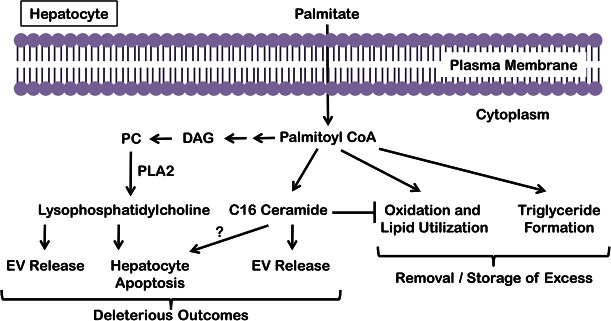Fig. 1.
Fate of palmitate in hepatocytes. Excess palmitate delivered to hepatocytes is converted to palmitoyl-CoA and can induce the formation of ceramide via the de novo pathway at the ER and LPC via PLA2 action on phosphatidylcholine (PC), which in turn is derived from diacylglycerol (DAG). Though palmitate can activate the proapoptotic machinery, palmitate itself and palmitate-derived LPC and ceramide all lead to the release of EVs from hepatocytes. Palmitate is buffered in hepatocytes by either oxidation or conversion to triglyceride, both of which mitigate palmitate-induced lipotoxicity.

